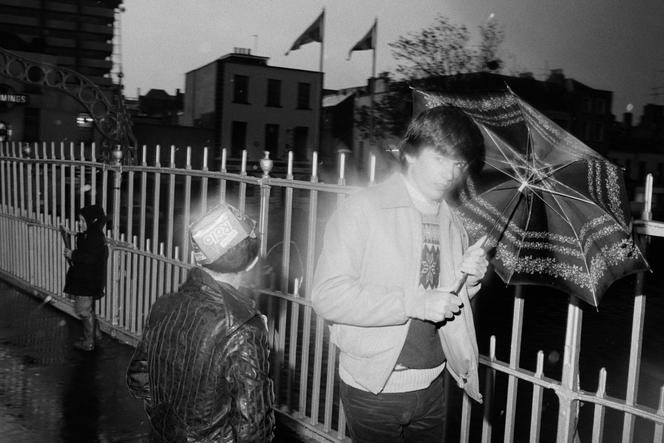


Alongside cricket matches and teatime, rain is one of the most popular clichés about Great Britain. It rains 133 days a year there – making Britain one of the wettest countries in Europe, despite climate change. Faced with frequent but unpredictable showers, Britons have adopted a variety of strategies: disorderly flight, dignified retreat, taking shelter (at bus stops, or in red telephone booths when they existed) and, more often than not, stoical and pragmatic indifference.
"If we didn't go out when it rains, we'd never leave the house!" said photographer Martin Parr, who dedicated his first book, Bad Weather (Zwemmer, 1982), to his compatriots showered by rain (and snow). That first black-and-white publication, which has since acquired a cult following, signaled the acidic style that was to become the British artist's trademark.
In the beginning, Parr said in a telephone interview, it was mostly about the challenge: "I wanted to question the prevailing norms." According to photographic tradition, a successful image is supposed to be sunny and aesthetically pleasing, and feature an exceptional subject. Parr did exactly the opposite. "I went, in the rain, to the most boring places possible: car parks, supermarkets."
To withstand downpours, Parr had to equip himself with a waterproof camera, which he purchased from a store specializing in underwater photography – much to the surprise of the salesman, who was convinced he was going diving. As bad weather made the images very dark, Parr began to light all the scenes with flash. "With the raindrops, it created spots in the images. It's considered a flaw, but I loved it. Sometimes I'd even add drops on the lens. And the flash in broad daylight gave the images an unreal look." From then on, Parr never stopped using a flash. It has become his signature.
Many of the photos were taken in Ireland ("a country even wetter than Britain"), where his wife had found a job as a speech therapist. But his images – whether taken on London Bridge, in a meadow or next to a factory – are above all a way of evoking British society as a whole. For it rains on everyone, said Parr, whose book emphasizes the democratic side of bad weather: "Even the queen gets wet." Indeed, it is hard not to empathize with the people in the photographs, from passers-by protecting their heads with cardboard or plastic bags to those resigned to their pitiful condition as human mops. But according to the author, any humor comes from the situations themselves: "I didn't do anything to make [them] funny."
You have 12.06% of this article left to read. The rest is for subscribers only.
